Olivia Colman, star of Netflix’s series The Crown, thinks the Queen is a leftie
Oscar winning actress Olivia Colman, who dons the crown in season three of the hit Netflix series, talks about her ascension and royal politics.

The Crown is entering its danger zone. Netflix’s imminent third season of Peter Morgan’s lavish, painstaking dramatisation of the Queen’s reign surveys the years from 1964 to 1977.
A dozen years have passed since Elizabeth’s accession at the series’ start and every member of her family has been recast with older actors. This is the new season’s first peril. Can it persuade us that since we last met Her Majesty two years ago, Claire Foy has aged into Olivia Colman?
READ MORE Graeme Blundell on The Crown series 2 | As close to history as drama can go
Colman is an Oscar-winning actress, but Charles Moore, biographer of Margaret Thatcher (with whom The Crown will have its sport in season four), has already expressed his doubts, writing that Colman has a “distinctly left-wing face”.
“It’s just absurd to say that you can’t play someone if you’re not actually them,” says Colman when I meet her in a London hotel, where the press is meeting the new cast at Netflix’s pleasure.
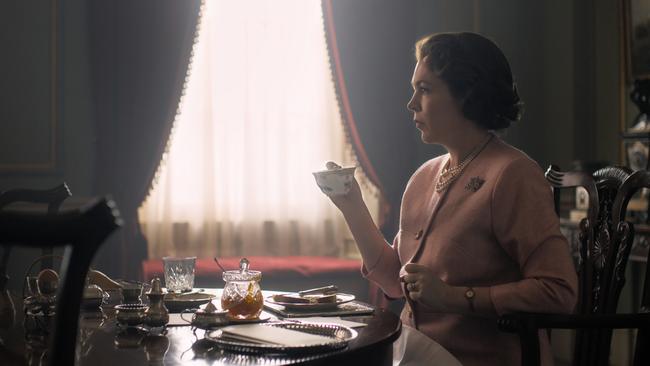
“I mean, what’s the point in acting at all? What’s the point of putting on an accent or dyeing your hair or playing anybody if you have to be identical in the first place and have the same feelings? I think it’s absurd.”
It is absurd, not least because Colman’s Oscar was for playing the not notably left-wing monarch Queen Anne and she previously had won an actress of the year award for her portrayal of Carol Thatcher in The Iron Lady.
As a matter of fact, Colman says, she is left-wing, “a left-wing monarchist” — and historians have noted that the Queen did get on very well with the Labour prime minister who came to power in 1964, Harold Wilson.
“I think she’s a leftie, but I think what’s extraordinary and wonderful about her, she can be everything to anybody,” says Colman. “Whatever you want her to be, she sort of is. I want her to be a leftie and think she is because she loved Harold Wilson.”
Colman is predictably wonderful as the 40-something Queen. So is Jason Watkins as Wilson, ditto Helena Bonham Carter’s surprisingly sympathetic Princess Margaret. Ditto everyone, actually. There are no casting missteps such as season two’s hiring of the too-weedy Anton Lesser to play Harold “Supermac” Macmillan. The Crown is recast. Long live The Crown. I pledge my loyalty to them all.
This is not the only danger the new season faces, however. As it crawls closer to modern times, there are more living memories to offend. The first two series were for most of us the stuff of history books; The Crown now trespasses on recollection. The peril facing the new episodes is that for some of us its spell may be broken by wilful inaccuracy.
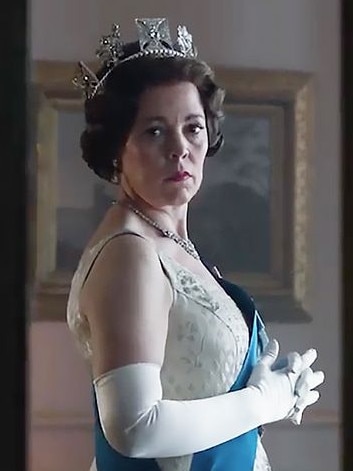
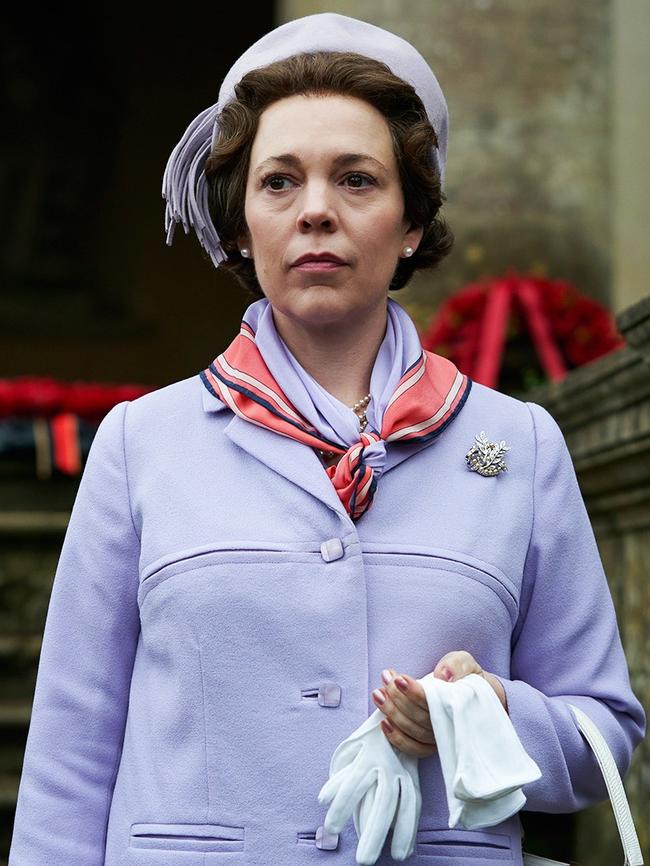
The first anomaly that screamed out at me when I watched these new episodes was Elizabeth and Philip eating breakfast in front of breakfast television, a curse that fell upon the kingdom two decades later in 1983.
“Isn’t that funny? Oh, my goodness! Oh, I’m going to go back and mention that to Peter,” says Colman when I mention it.
A more elaborate sleight of hand cannot be put down to laziness. It is a deliberate recasting of history to make a better story.
Episode four deals with Richard Cawston’s Royal Family, an authorised documentary that won 30 million viewers on BBC One and ITV in 1969.
Bubbikins, as the instalment is titled, tackles why the documentary was made, the reaction to it and the royal family’s response. Were students to mistake this episode of The Crown for history, they would fail their GCSEs in royal studies.
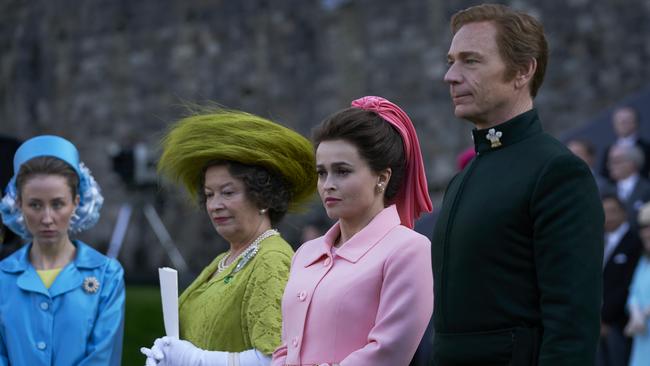
The episode begins with Prince Philip’s appearance on NBC’s Meet the Press in the US in 1969. A Guardian feature writer, a rebellious Irishman called John Armstrong, is in the US covering a Muhammad Ali boxing match but happens to see it on his hotel room TV. He rings his newsdesk to file a piece making fun of the duke’s laments that the royal family is short of cash.
Back at Buck House, Philip decides to restore the family’s reputation by permitting a behind-the-scenes documentary designed to demonstrate how normal and hardworking they are.
Disastrously, however, it is Armstrong who is chosen by The Guardian to review it — on the front page, too — and scathingly writes of the family’s “overinflated sense of self-entitlement”.
The Queen, horrified, decrees that it will be “better if that documentary is never seen again anywhere by anybody”.
Philip is not defeated, however, and invites Armstrong to interview the most accessible and modern of the royal family, Princess Anne. She ducks out, but Armstrong nobbles instead Philip’s estranged and aged mother, Princess Alice, who has been taken in by the palace after the colonels’ coup in Greece in 1967. Armstrong’s interview with her proclaims her a saint.
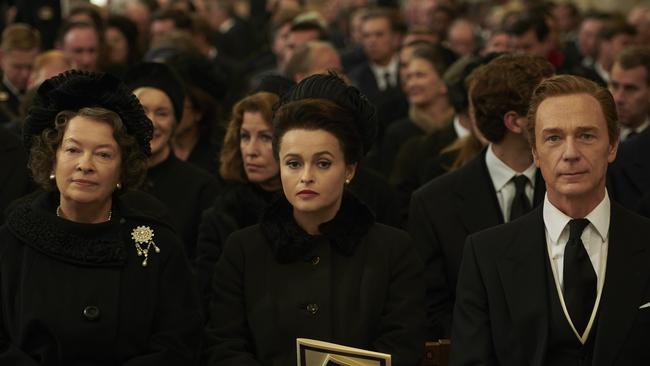
The question is where to start with the fictions in all this. First, perhaps, with the Meet the Press program, which was broadcast in November, almost five months after Royal Family.
Prince Philip’s replies did get a front-page write-up — “Life and hard times of the Royals” — in The Guardian, but by the urbane public schoolboy Adam Raphael, whose account was mainly descriptive.
There was no “John Armstrong” and even were he to have existed, he would not have written a damning front-page Guardian review of the documentary, not least because the documentary went out on a Saturday and was old news by Monday’s paper. The paper’s TV reviewer, Stanley Reynolds, merely noted that Her Majesty was “a delightful surprise”.
As for the documentary never being shown again, it was repeated on Christmas Day 1969, New Year’s Day 1971, and again in 1977. You will not, by now, be flabbergasted to hear that the dying Princess Alice did not give an interview to “John Armstrong” of The Guardian or, so far as I can see from Hugo Vickers’s biography of her, to anyone else.
I ask Colman whether she worries that people will think they are learning history from the series.

“You know, I saw a website that suggested that royals were all lizards. Which is hilarious. There are worse places to learn from, but, of course, as I keep saying, what happens behind closed doors, we don’t know. So if people are thinking that it’s gospel, that’s unfair, and unfair to themselves. I hope people are more intelligent. Of course, it’s mixed in with real things, real happenings and footage which looks almost the same as the real, but I hope they know that it’s also a dramatised version.”
Colman nails it here. The Crown is a fantasy of the Queen’s life, but it is also obsessed with accuracy at the microscopic level. In January I visited the show’s studios in Elstree, Hertfordshire. A script editor is consulted on whether the word “soulmate” would be current in the early 1970s. The series’ protocol adviser, Major David Rankin-Hunt, is asked by Josh O’Connor, playing Prince Charles, whether he should hold a glass of wine by its stem (O’Connor may be taking the mick, the major confides).
One of my most interesting encounters is with the head of hair and make-up design, Cate Hall, who shows me the scrapbooks she has compiled for each of the main characters, so she can chart changes to their hair across the 13 years covered by this series.

Charles was easy. “His haircut has been the same,” she says. “People rave about what we have done with Josh, but all it is is a parting, a really well-regulated parting, really extreme and deep and low and going all the way to the crown.” The Queen’s hair-do, in contrast, fills out in the 70s. She began dyeing her hair in 1974. As for Princess Margaret, “she was a chameleon”. Hall met Margaret’s still extant hairdressers at a salon in Mayfair, where they keep some of the princess’s hairpieces. Her husband, Lord Snowdon, grew sideburns in 1967.
“Of course, it doesn’t matter,” says Hall. “No one watching The Crown will know, but it is that feeling of authenticity. I feel, for us, if we are not doing that, then why are we bothering?”
I see two scenes being filmed: one is between Colman and Erin Doherty, who plays the young Princess Anne, discussing what to wear for a military “amalgamation” ball. The scene is tightly written, gesturing towards Britain’s straitened economic state as the reason for the amalgamation of regiments, Anne’s cool relationship with her mother and her lack of self-esteem.
The second scene has Charles on an early date with Camilla Shand (before her marriage to Andrew Parker Bowles). It rather less subtly speaks to his frustration at having no proper role; his life, he says half-jokingly, is not so much “an existence as a predicament”.
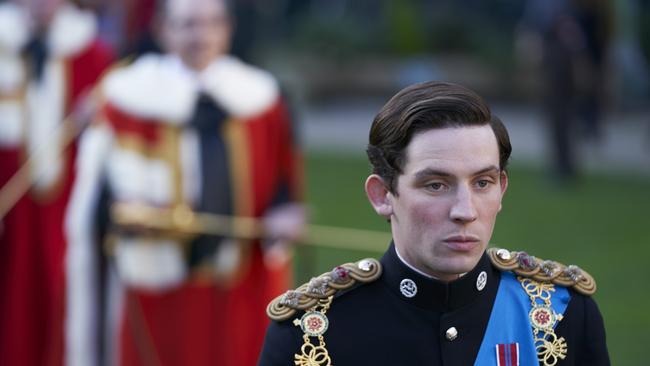
After shooting her scene with Colman, Doherty, in a surprisingly unregal accent (she was brought up in Crawley, West Sussex) talks about how the Queen and Anne are not “very touchy-feely” and the “awkwardness” of their relationship. I say Anne clearly wants her mother to say she is beautiful, and Doherty agrees. Instead Anne goes to the mirror and looks disappointed at what she sees. “Heart-breaking,” says Colman, who is in the cabin with her “daughter”.
I wonder what their real-life counterparts will make of the scene. “Oh, even to think about them watching is just too stressful,” Doherty replies.
Colman, when I see her months later, says she believes The Crown treats its subjects with respect. “If the royal family watch it, I hope they like it, but I would also understand completely if they never wanted to watch it. I’m not sure I’d want to if people were making up stories about my family behind closed doors.”
At Elstree the call sheet places inverted commas around the characters. The Queen is “the Queen”, for example.
The Netflix PR advises me not to overthink this, but I wonder if it is not a useful way to see The Crown’s royal simulacra. If we do not, we may be surprised at the degree to which public lives have been contorted by a writer determined not to allow facts to stand in the way of a good story.
A good story, however, is undoubtedly what The Crown remains. For most of its loyal fans, that and its outstanding cast will probably be enough.
THE TIMES
The third season of The Crown begins on Sunday on Netflix.

To join the conversation, please log in. Don't have an account? Register
Join the conversation, you are commenting as Logout